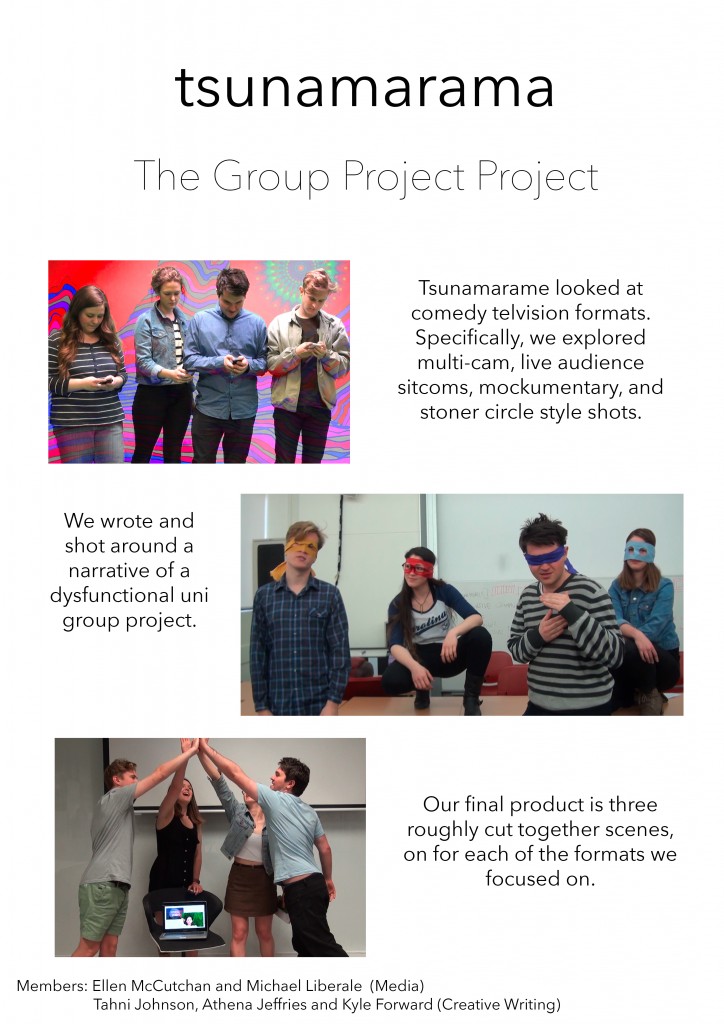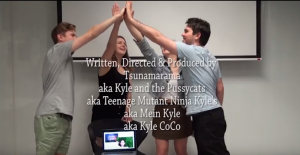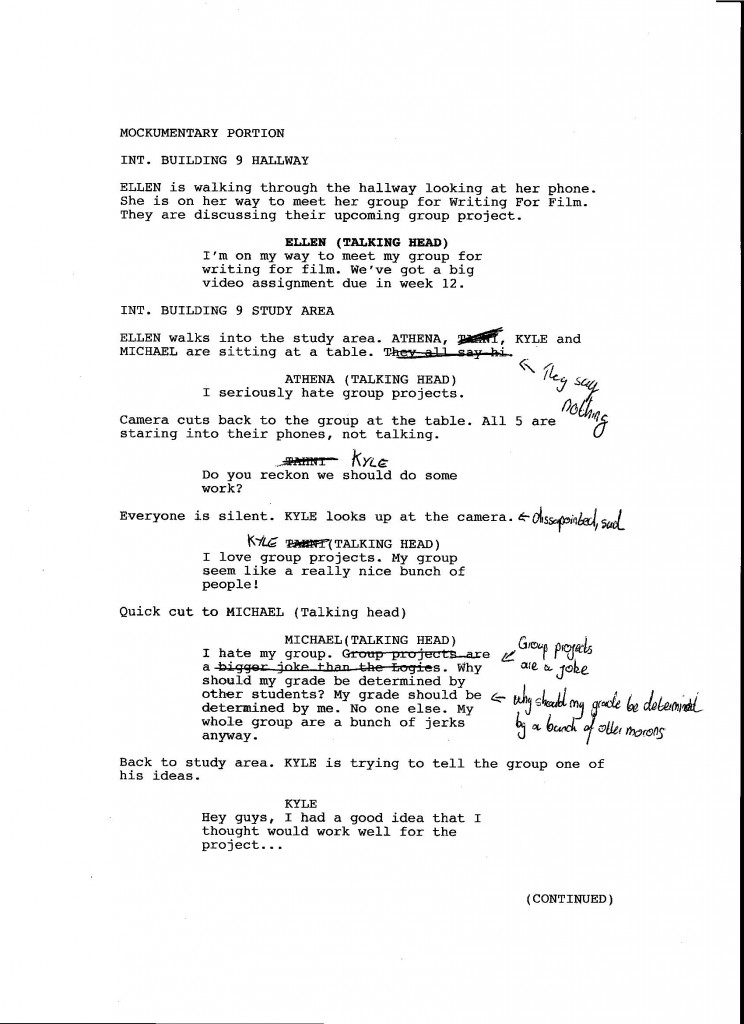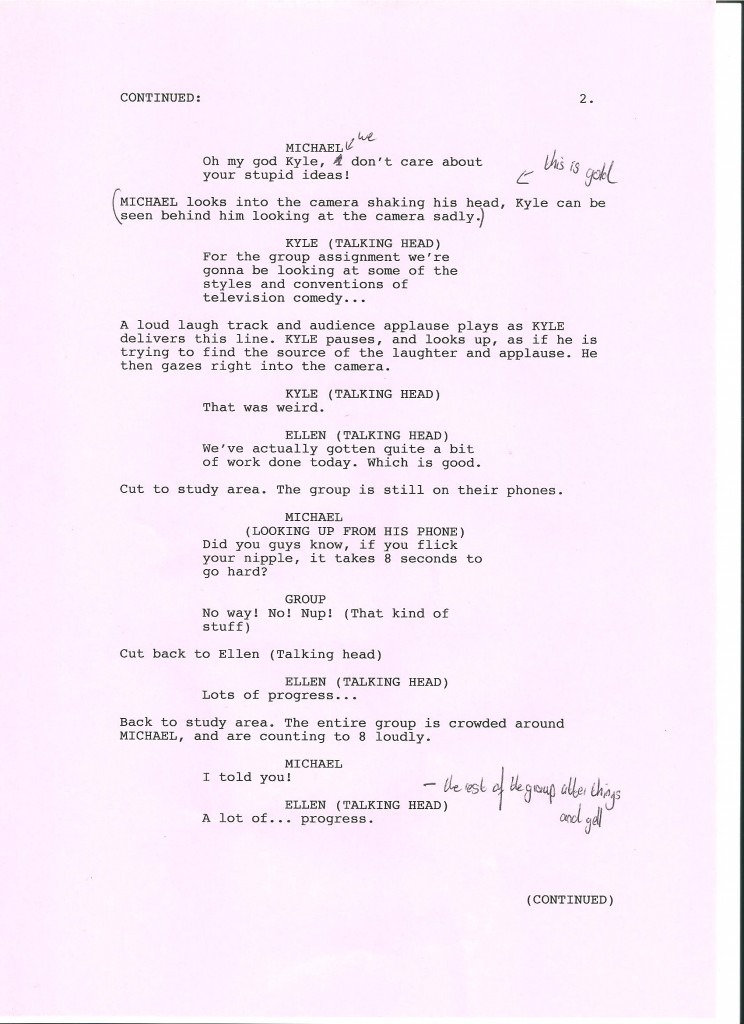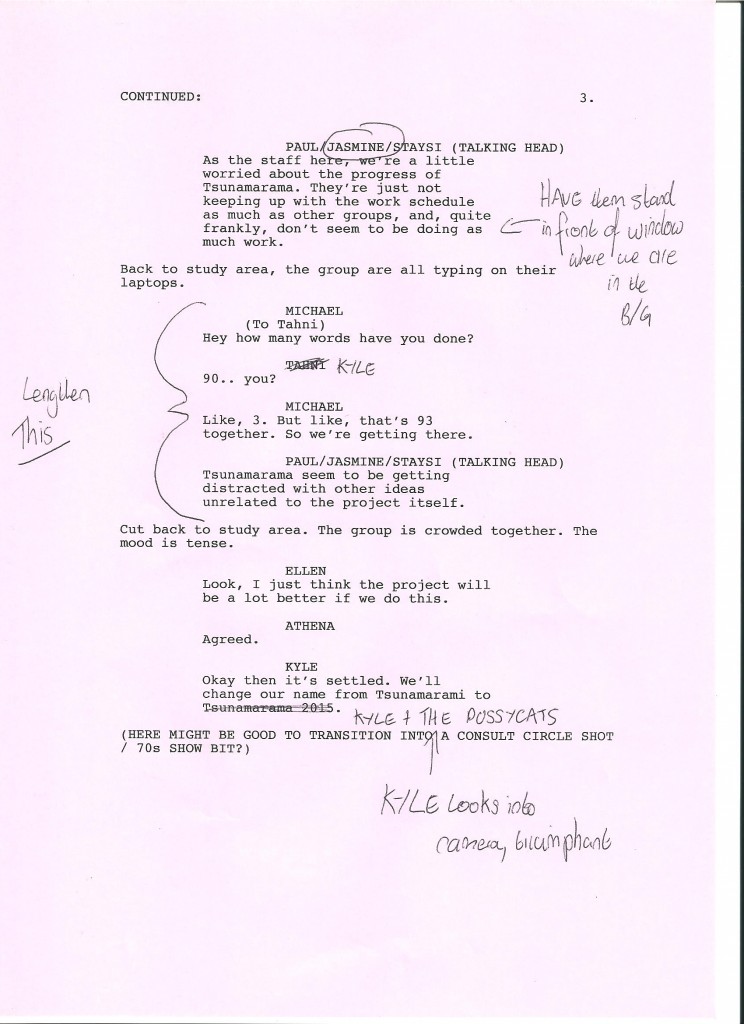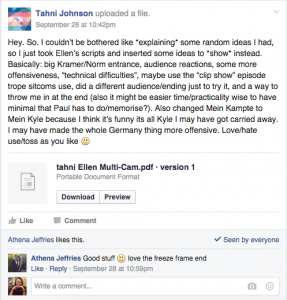This week saw the end of Writing for Film, as well the end of my second year of studies.
The studio this semester was different to how I imagined it would be. I imagined there would be more writing, and more obvious peer-to-peer teaching between the two groups of students. Even though this wasn’t necessarily the case, I was still able to write and explore media making, which was great. It also offered an opportunity to look more deeply at things I enjoy, such as comedic television.
Our end products for this studio are rough. They were filmed by a single camera operator with zero experience, and cut together quickly and roughly. Our intention was never to have a polished piece, but seeing everyone else’s at the final studio presentations made me nervous about screening it in front of the media cohort.
During the presentation, I realised that the screener I made last week was terrible. It had long periods with no sound and a lot of text, and the clip I chose wasn’t the best representation of our work. This was partly because it was such a rushed exercise, and partly because I just didn’t care that much last week when I was doing it. If I was to put together another screener, it would be entirely clips from our shoots, with only one slide of explanation.
Watching our work at the exhibition, it was obvious to me that the quality was rough and the editing shonky. However, we were more focused on writing and experimenting, rather than producing a shiny final piece, so I am happy with our end result; the jokes played well and our intentions are obvious. While some of my peers had beautiful looking short films to show at the end of this semester, it did not bother me that our work didn’t look as good. People still laughed, and they could easily recognise the format we were going for in each scene. With strong scripts, it didn’t matter that the quality was not high.
While there are things I would change if I had the chance, ultimately, we did the best we could in the time we had. We got to deepen our understanding of how TV works. We got to experiment with writing scripts for certain styles of filming, and we got to shoot three scenes, with varying success. And we got some laughs during the exhibition.
